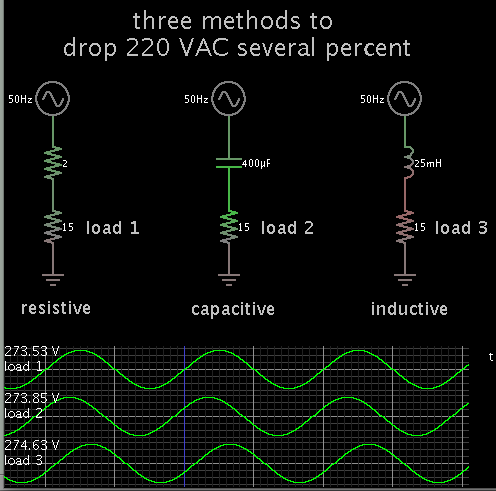acannell
Junior Member level 2
I need to make a power supply to convert 110VAC 60hz to 190Vdc @ 12.5A, about 2.4Kw.
Please dont try to dissuade me..I've wanted to make a power supply and get into SMPS design for years and I've never had a good reason to until now. Its now or never!
I am an EE with lots of practical design experience in light duty commercial circuitry but nothing as sophisticated as an SMPS from scratch, especially a multi kilowatt one. I do appreciate how complex it is and it is not a task to be taken lightly. But I've wanted a chance to get my hands dirty in SMPS. I'm not in a rush and I don't mind if this takes a couple years to get right. Its for enjoyment and learning.
This will be to power the spindle of a CNC mill. The spindle motor is BLDC, and has a spindle amp which controls it. So this power supply will really connect to the spindle amp.
Right now, the spindle amp power supply is generated as follows: 220VAC single phase to primary of large 3kw transformer, secondary is 110VAC which gets rectified and filtered to about 160Vdc unregulated. That gets fed directly to the spindle amp. This isnt my hobby design or something, this is a commercially made mill and thats how its made, and its worked great for about 20 years!
The mill has a maximum speed of 7000 rpm. The manufacturer tells me that I can get it to safely go to 10000rpm if I can somehow get 190Vdc to the spindle amp instead of the 160Vdc. So thats the reason for this.
I notice the folks at diysmps seem to make power supplies like this regularly and I can probably find some designs to learn from there.
But I'd like to know if there are any other ways to skin this cat? I just need the 180V to 195V at about 12.5 Amps. I can use a linear regulator to keep the voltage from exceeding 190V since thats the max temperature the spindle amp can take. So I think the output just needs to be at least 180V and up to 195V and we are good.
Is there another realistic way to do this besides SMPS? I'm up for anything.
Please dont try to dissuade me..I've wanted to make a power supply and get into SMPS design for years and I've never had a good reason to until now. Its now or never!
I am an EE with lots of practical design experience in light duty commercial circuitry but nothing as sophisticated as an SMPS from scratch, especially a multi kilowatt one. I do appreciate how complex it is and it is not a task to be taken lightly. But I've wanted a chance to get my hands dirty in SMPS. I'm not in a rush and I don't mind if this takes a couple years to get right. Its for enjoyment and learning.
This will be to power the spindle of a CNC mill. The spindle motor is BLDC, and has a spindle amp which controls it. So this power supply will really connect to the spindle amp.
Right now, the spindle amp power supply is generated as follows: 220VAC single phase to primary of large 3kw transformer, secondary is 110VAC which gets rectified and filtered to about 160Vdc unregulated. That gets fed directly to the spindle amp. This isnt my hobby design or something, this is a commercially made mill and thats how its made, and its worked great for about 20 years!
The mill has a maximum speed of 7000 rpm. The manufacturer tells me that I can get it to safely go to 10000rpm if I can somehow get 190Vdc to the spindle amp instead of the 160Vdc. So thats the reason for this.
I notice the folks at diysmps seem to make power supplies like this regularly and I can probably find some designs to learn from there.
But I'd like to know if there are any other ways to skin this cat? I just need the 180V to 195V at about 12.5 Amps. I can use a linear regulator to keep the voltage from exceeding 190V since thats the max temperature the spindle amp can take. So I think the output just needs to be at least 180V and up to 195V and we are good.
Is there another realistic way to do this besides SMPS? I'm up for anything.
